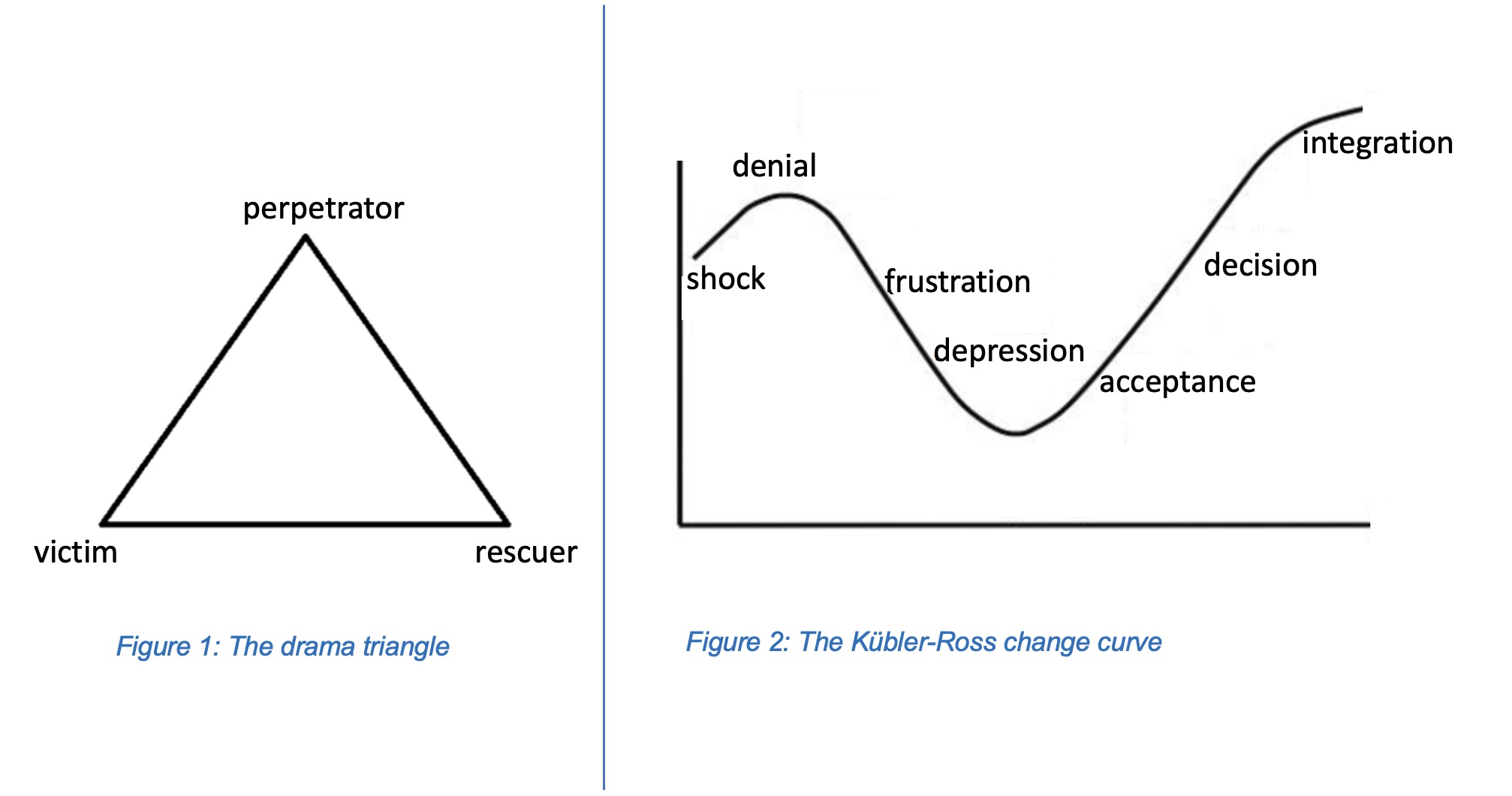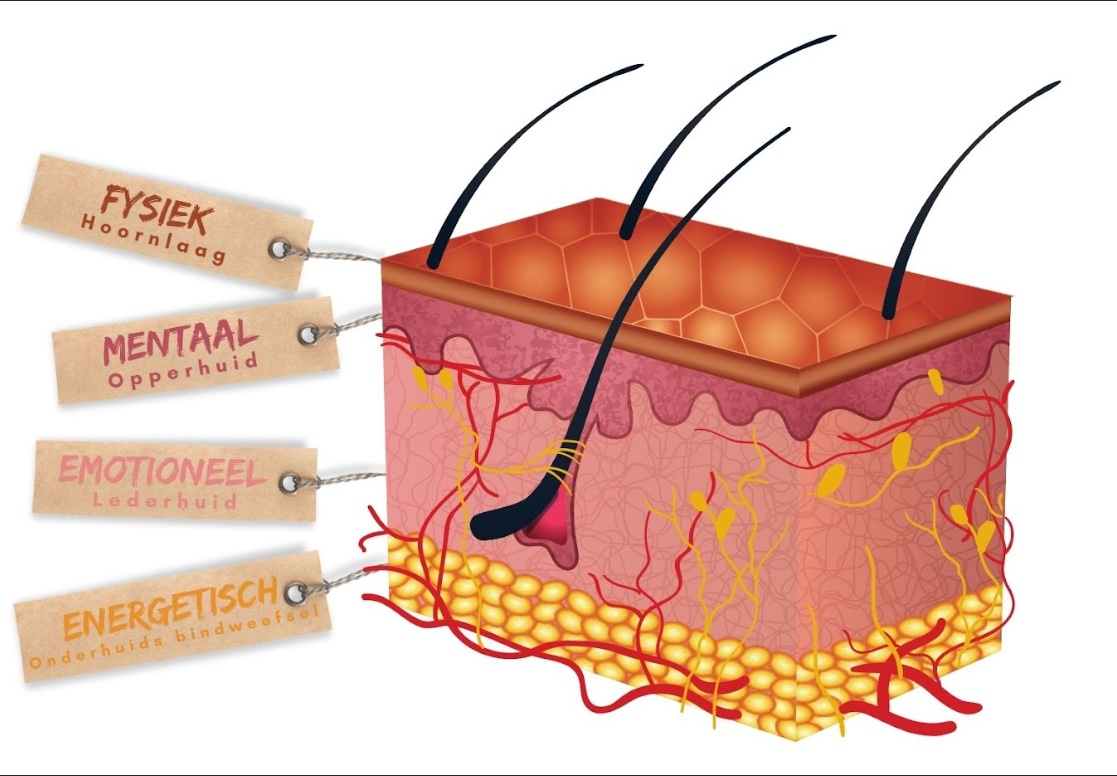There is limited literature available on mind-body techniques and skin diseases. A systematic review from 2022 [1] looked in the literature at the effects of mind-body techniques on, among other things, psoriasis and eczema. The idea here is that stress can worsen a skin disease and can cause stress to a skin disease. Mindfulness-based intervention for psoriasis showed a significant improvement in PASI in one study [2] and in another study there was no statistically significant effect. [3] No study has been conducted with mindfulness for eczema. There is a study with habit reversal therapy, a psychological therapy. This therapy provided a significant improvement in the SCORAD. [4]
Mind-body coaching is about rewriting beliefs from the mental layer and thereby experiencing emotions that may be underlying physical complaints. Most chronic skin diseases involve long-term inflammation at the physical level. Long-term inflammation can resemble a battle of inflammatory cells in the skin. In the case of a bacterial infection, this is a functional fight against the perpetrator, the bacteria. With an inflammatory skin disease, this fight is often present without an obvious perpetrator being present.
In the mind or mental layer, a similar theme often plays a role in inflammatory skin diseases, such as eczema and psoriasis. What is the cause or more often, who is the culprit of my skin disease? Do I have an allergy, or is there an external cause? The idea is that eliminating a possible perpetrator will lead to a quick solution. If there is an allergy, it is of course important to avoid the allergen in question. However, this is often not the case and a feeling of disappointment arises for the patient if there is no external perpetrator. Holding on to this thought can be blocking. The dynamic in which the conversation then emerges is the drama triangle (Figure 1), with the patient in the role of victim, the doctor in the role of rescuer and the thought of a possible external perpetrator. Rewriting the perpetrator belief or letting go of this thought can help you take ownership of the skin disease or take responsibility. When rewriting this thought and ownership, emotions often arise, such as disappointment or even a kind of grief. This often starts with denial and then comes anger, fear and sadness. Once these emotions are felt, acceptance can arise. The Kübler-Ross grief curve (Figure 2) shows this.
If a patient consciously or unconsciously holds or suppresses one of the negative emotions, there is no acceptance and there is a good chance that there will be no openness to the therapeutic options offered for the physical layer by the dermatologist. If someone can feel these emotions, acceptance arises and space is created to hear the therapeutic options and choose what suits them. Recognizing that something is happening in the patient’s emotional layer can also provide space in the conversation.

Model with symbolism
If you look at the skin symbolically, you can place the dynamics of physical, mental and emotional just described as follows (Figure 3). The first layer, the stratum corneum, symbolizes the physical layer of the skin. That is the layer where the patient comes up with the complaint, for example eczema, and there is the wish for healing. The mind or mental layer just mentioned is represented in the second layer, the epidermis. The impact of beliefs and thoughts often emerges somewhere in the consultation. When it comes to eczema, the thought often arises: I have a cow’s milk allergy. The third layer, the dermis with sensory nerves and often inflammation in chronic skin diseases, symbolizes the emotions. Emotion means e-movere, energy in motion. When it turns out that there is no cow’s milk allergy, the patient may hold on to the previously mentioned belief and also hold on to a negative emotion, such as denial, sadness, anger or fear. The fourth layer, the subcutis, symbolizes energy. In the situation just described of cow’s milk allergy, all the dermatologist’s energy can be focused on mentally convincing the patient. It may also be that the patient himself puts all his energy into emotions or maintaining the no longer serving mental belief. The energy released when rewriting this belief and letting go of the emotions can be used to realize desires or unused talents. In any case, this person will feel better figuratively and sometimes literally.

Figure 3. Symbolism of four layers of the skin:
Fysiek-Hoornlaag=physical layer-stratum corneum
Mentaal-Opperhuid= mental layer-epidermis
Emotioneel-Lederhuid= emotional layer-dermis
Energetisch-Onderhuids bindweefsel= energy layer- subcutis
Conclusion
Mind-body connection describes the connection between the physical and mental layers. The underlying mental beliefs in a skin disease are usually linked to emotions. Letting go of no longer serving mental beliefs and associated emotions can provide energy for the realization of one’s talents or desires. This can have a positive effect on the skin disease or make someone feel better, figuratively speaking!
Summary
Literature
- Rafidi B, Kondapi K, Beestrum M, Basra S, Lio P. Psychological therapies and mind-body techniques in the management of dermatologic diseases: a systematic review. Am J Clin Dermatol. 2022;23:755-773.
- Fordham B, Griffiths CEM, Bundy C. A pilot study examining mindfulness-based cognitive therapie in psoriasis. Psychol Health Med. 2015;20(1):121-7.
- D’Alton P, Kinsella L, Walsh O. Mindfulness-based interventions for psoriasis: a randomised controlled trial. Mindfullness. 2019;10:288-300.
- Noren P, Hagstromer L, Alimohammadi M, Melin L. The positive effects of habit reversal treatment of scratching in children with atopic dermatitis: a randomised controlled trial. Br J Dermatol. 2018;178:665-73.

